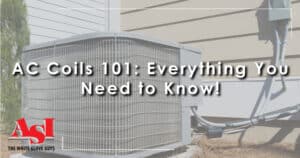In San Diego we’ve heard about ozone depletion for almost 20 years as a major problem caused by a variety of chemicals we use almost every day. Propellants in aerosols, certain cleaning materials and the refrigerant in your air conditioning system are all culprits in the depletion of the ozone layer. So when you purchase a new AC unit, you want to be sure you won’t continue to contribute to the problem.
What Causes Ozone Depletion?
The number one contributor to ozone depletion is chloroflourocarbons, the man-made chemicals used in air conditioners since Thomas Midgley, Jr. invented the compound in the 1920s. When these chemicals reach the stratosphere, the ultraviolet light from the sun breaks the compound down to its base components, including chlorine atoms which subsequently break down thousands of molecules of ozone before dissipating.
The earliest CFCs used in air conditioners were incredibly damaging to the ozone. But since legislation was passed to stop the damage and new technologies were developed, there are less damaging alternatives.
Specifically, the refrigerant R410-A is considered environmentally friendly in that it doesn’t cause ozone depletion. Some air conditioners still ship with the older refrigerant R-22, however, which has been linked to ozone depletion and will no longer be allowed in new products after 2020.
Which Products Can You Buy?
When searching for a new air conditioner, look for a system that uses only R410-A. On average, these systems tend to cost more money, but keep in mind that in less than 10 years, refrigerants for older R-22 models will become much more sparse while R410-A will be an industry standard.
Of course, while R410-A doesn’t cause ozone depletion, it isn’t necessarily 100% environmentally friendly. It is still an HCFC and it contributes in smaller ways to global warming. If you live in a low humidity environment, consider purchasing an evaporative cooler rather than installing an air conditioner. These systems don’t contain any coolant and can be powered by solar heated water. They are not as effective in high humidity environments, but for those in dry climates, they are less expensive and more friendly to the environment than conventional. If you have any questions about this please call ASI Heating and Cooling.







Leave a reply